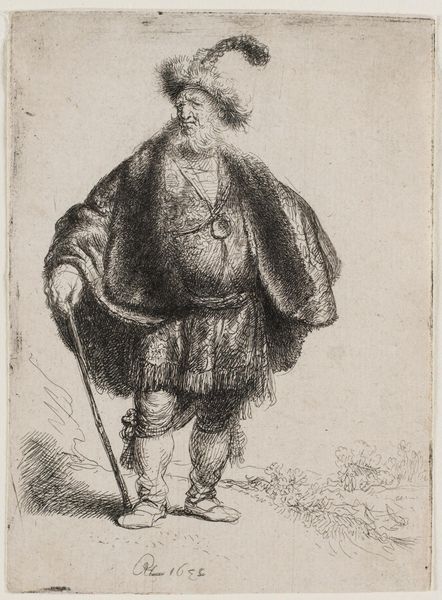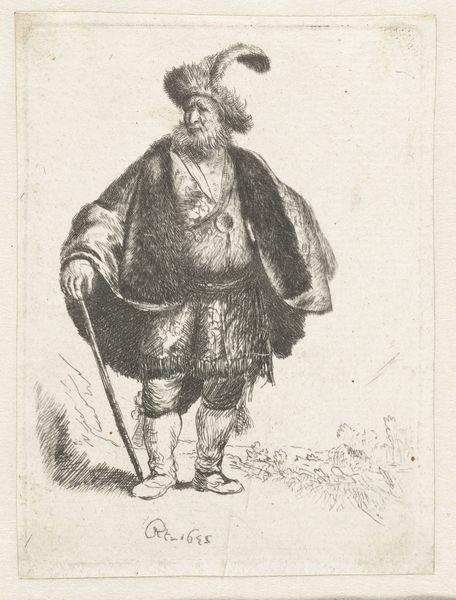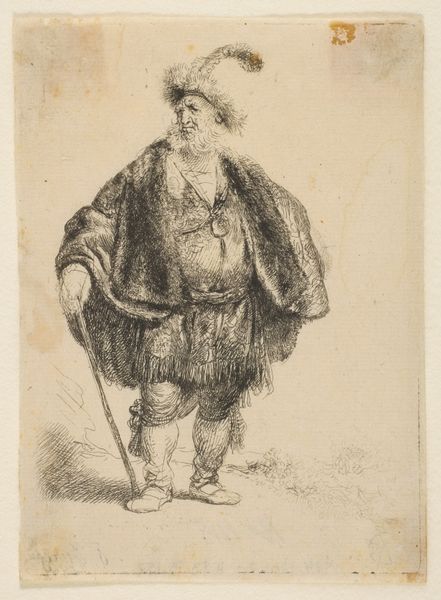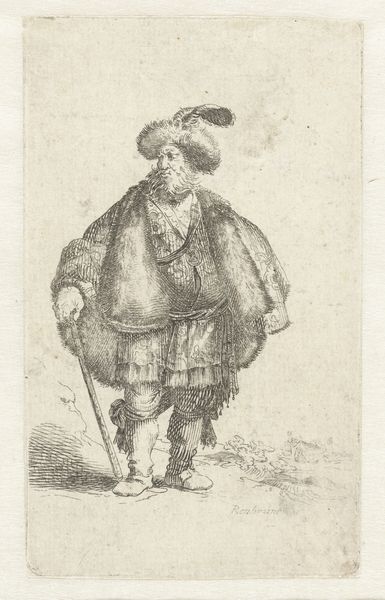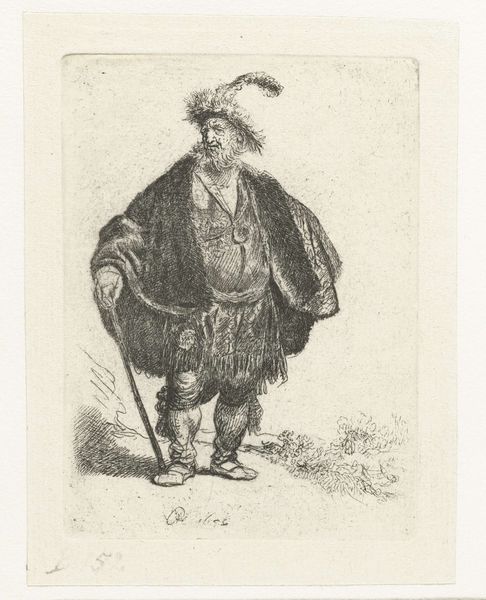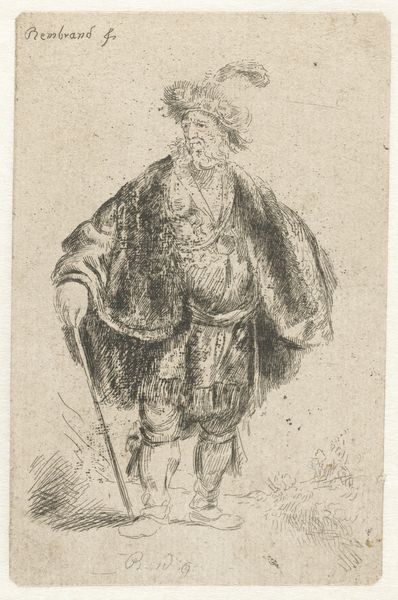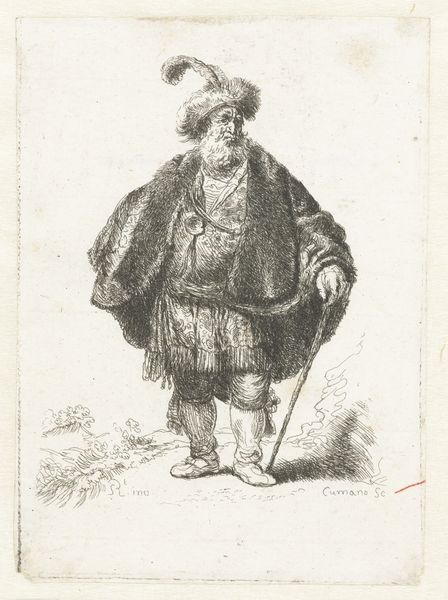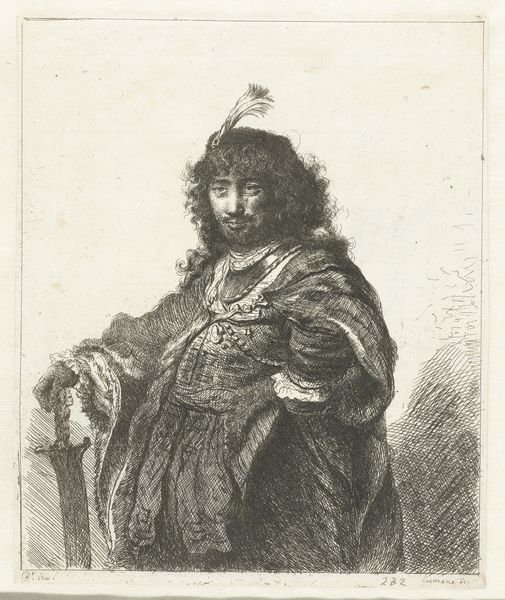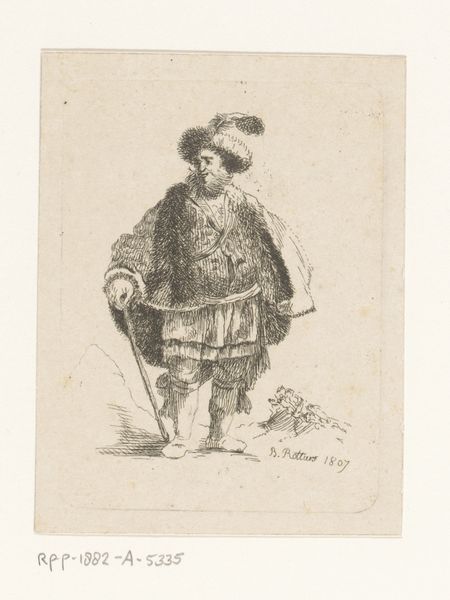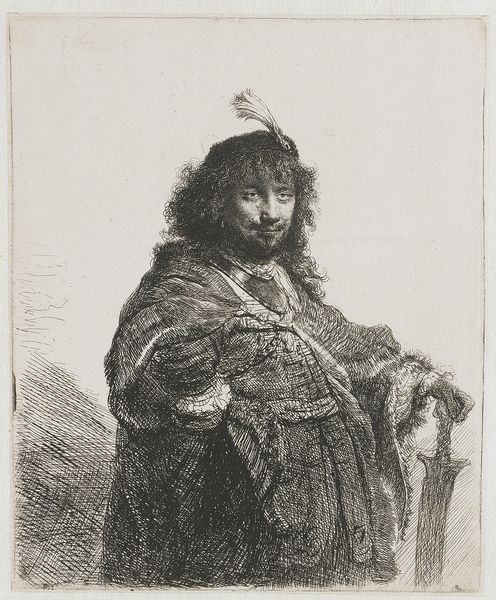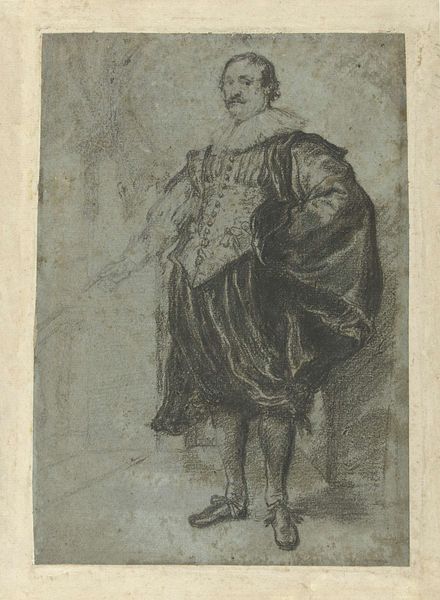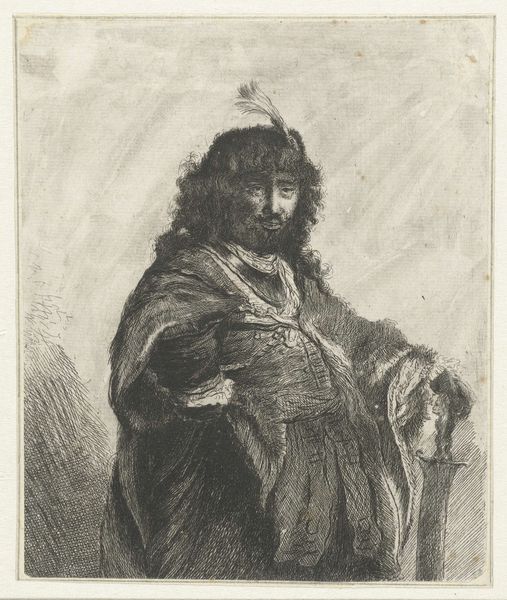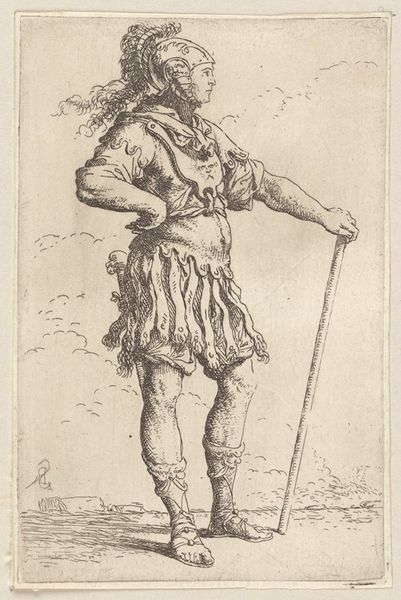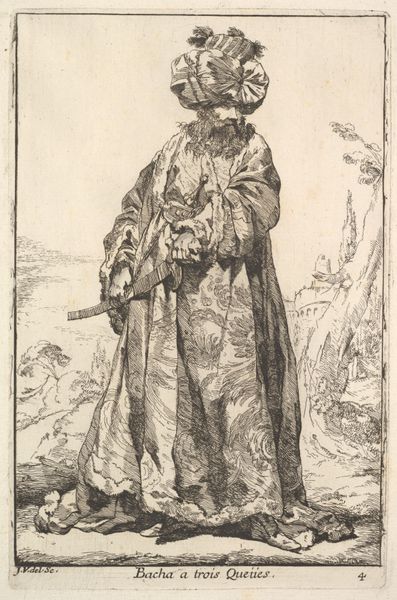
print, etching
#
portrait
#
baroque
# print
#
etching
Copyright: Public domain
Rembrandt van Rijn created this etching, titled ‘The Persian,’ in the Dutch Republic, likely in 1632. Here we see an interesting moment in the history of cross-cultural exchange and the European imagination. The image is dominated by a figure dressed in what Europeans understood to be Persian clothing: a fur hat with a plume, a decorative tunic, and a lavish cloak. But what did ‘Persian’ signify to Rembrandt and his audience? The Dutch Republic, a major center of global trade, encountered Persian culture through commerce and diplomacy. This print reflects the fascination with the exotic ‘Orient,’ filtered through a European lens. The choice of etching, a relatively accessible medium, suggests an intention to circulate this image widely, shaping public perceptions of foreign cultures. To understand this work, we can look into period costume books, travelogues, and diplomatic records to reveal the complex relationship between the Dutch Republic and Persia. This reminds us that art is enmeshed in the social, economic, and political networks of its time.
Comments
rijksmuseum about 2 years ago
⋮
Already in the 18th century this print was known as ‘het Persiaantje’ (the little Persian), because the man’s clothing was perceived as having Oriental features. However, it is not genuine Iranian costume. Although Rembrandt lavished attention on rendering the fabrics, it remains an imaginary, pieced together outfit. This is actually a tronie, but then a full-length one.
Join the conversation
Join millions of artists and users on Artera today and experience the ultimate creative platform.
